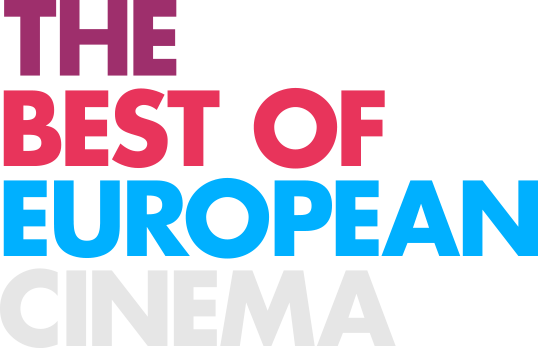Interview: Mark Chapman, Director of Camrex
Mark Chapman, an artist and filmmaker currently based in North East England, has dedicated a large part of his time in the past year to Camrex, his latest short film following TRANS (2013). While the earlier film utilised HD stills – which seamlessly dissolved into one another – to construct an intimate and complex portrait of a transgender female, Camrex is a moving-image documentary that presents a number of interwoven testimonies from men whose identities also appear to be in flux. Shot in Camrex House – a hostel of notorious repute in Sunderland, the formerly major hub of shipbuilding in North East England – Camrex is an intelligently layered study of emaciated frames and instinctive resilience in an absurdly grim locale.
Michael Pattison caught up with Mark (a graduate of the Berlinale’s Talent Campus in 2010) ahead of the film’s world premiere at the 69th Edinburgh International Film Festival.
Michael Pattison: How did you first discover Camrex House?
Mark Chapman: I was casting a drama feature and the project involved extensive work with non-actors and lots of street casting. I met an ex-drug dealer, who told me that after serving his last prison sentence he was released into a hostel called Camrex House. He spoke with contempt about the conditions but described meeting an interesting assortment of residents, many of whom had been trying to find proper housing for years. My casting work had taken me to numerous hostels in the North East and I quickly found out that Camrex had developed quite a notorious reputation. The decaying atmosphere of the place was immediately apparent. It felt like stepping back 40 years. After production, I decided to go back and explore the characters and environment through a photography project.
MP: Still photography? How did that develop into a film?
MC: My method of working begins by using a stills camera – for Camrex I used an old Polaroid SX-70 – to explore the subject, reveal the location, build relationships with characters and develop an image system. At that stage the intention was to create a photographic work that could exist on its own terms. Later on, it became clear there were certain atmospheres, characters and stories that would be compelling when rendered as a film narrative. I thought that if I could capture the intimacy of the Polaroids, I’d have an engaging film. Obviously, with the switch in medium comes a new set of challenges, but by that point the residents were used to my presence and I had developed a good working knowledge of the hostel. Almost immediately after introducing the video camera the story of the resident stabbing a seagull to death on the street emerged and I knew that that strange, violent image was my access point with which to communicate the atmosphere of the environment.
MP: How long did you spend there?
MC: I filmed for around eight days spread across a few months. This allowed time for my two main characters, Derek and Matthew, to really invest in the filmmaking process. That kind of investment is always important, but particularly so here due to the performative nature of the scenes we were shooting. Neither of them had been in front of a camera before.
MP: Did you direct your subjects in any way, or did you feel at any point they were performing or exaggerating for the camera?
MC: The film is almost entirely constructed. They’re essentially actors in their own stories and we do as many takes as I need to do. It was a confluence of elements that constantly evolved throughout the process: I recorded the interviews first and then devised scenes in response. This also incorporated off-camera discussions with the contributors and my own observations and ideas. Through this method, the film’s grammar developed alongside the revealing of the contributors’ relationship to each other and the hostel. I’m interested in creating expressive, visually led narratives and I knew I wouldn’t have been able to achieve the kinds of images I wanted through straight observation.
You have to cast really well because this method requires significant commitment from the contributors. As a filmmaker it’s exciting to see them investing in the project, but during the filming it was often quite intense. For example, before we were to shoot Matthew’s exercise scene, he told me that he had just returned from the hospital after overdosing the day before. According to his neighbour, the paramedics were seconds from pronouncing him dead when he suddenly revived. The carpet in his room was still soaked with the water that had been poured on him. I suggested we postpone, but he wanted to shoot the scene. So we did.
MP: TRANS also evolved from still photography – though on that occasion the stills were incorporated into the film’s design. How important was it for you to move beyond that style?
MC: Camrex is the evolution of many of those techniques, and hopefully of me as a filmmaker. The hostel had distinctive cinematic possibilities and so required a different treatment. I’m interested in a non-fiction cinema that moves away from journalistic reports and instead foregrounds personal, subjective narratives that are also rigorous aesthetic constructions. Each cut should be a progressive move, revealing something new about a character, situation or theme in order for the film to resonate more deeply with audiences. I wanted people to feel the weight of the environment with every frame.
MP: But this doesn't feel like typical British miserablism...
MC: If you mean the social realist tradition, some great films have emerged from that. The Arbor, Made in Britain, Small Deaths, Nil By Mouth. These films are rich with energy and intelligence. However, if you self-consciously trade in notions of authenticity then it’s very easy to fall into self-indulgence.
If Camrex avoids miserablism it’s perhaps because the characters are actively fighting against their situation. They are not passive observers in their own story and I’m not using the film to affirm a pre-planned thesis. I’m also not interested in merely showing people at their worst.
Derek’s needle is every bit as much an act of rebellion as Matt’s rifle. I think an audience can feel the energy of these lives lived from moment to moment: these guys live without the safety nets most of us have, such as a stable family unit, and significant life choices – financial, threats of violence, mental and physical health – are always very close to the surface. This allows an audience to access and walk close to the characters throughout the film.
MP: None of your subjects are actually seen talking – their testimonies are all in voice-over form. How long did you take to edit the film?
MC: I always felt that the film existed in the space between the sedate routine of the hostel and the extraordinary, fierce emotions expressed by the residents. It should feel like a bad dream. Again, to foreground the personal, intimate and sensory, I stripped the voice-over down to its essential elements. It gives both the words and the pauses real impact, but it took a few months to find the correct balance.
MP: At one point, one character refers to another as “a danger to society.” It's a pretty bold decision to include that.
MC: It’s a key line. A provocation, of course: just how is the interviewee using the interview? When constructing a film out of reality, there’s an ethical dimension to every decision you make and those tensions persist throughout each stage of production. An audience will similarly find themselves facing ethical issues about what they see and hear, so it’s important for the filmmaker to build the correct foundations, or interpretive framework, for the story. I’d much prefer the audience to actively participate and such inferential gaps encourage this. I recently screened the film for the “danger to society” in question and on that line he actually laughed out loud. He entirely understood how it was being used.
Camrex screens at the Edinburgh International Film Festival as part of the themed programme of shorts entitled ‘Borders and Margins’ on 23 June.
For more about Mark Chapman's work visit HERE
For more from Michael Pattison visit iD Film
22 June 2015, by Michael Pattison






